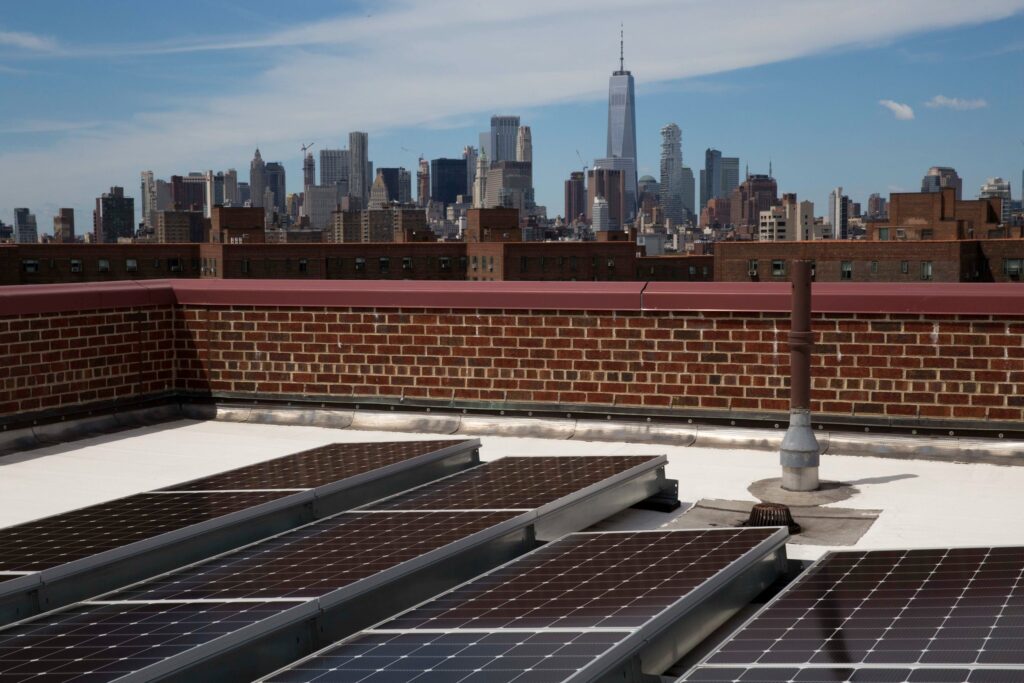What are distributed energy resources?
Rooftop solar panels are the most common and fastest-growing type of DER, but other types also exist, like electric vehicles (EVs), small-scale hydroelectric dams and natural gas generators, biodigesters, and battery storage.
How common are distributed energy resources?
DERs make up a small percentage of energy generation, but are becoming more common. Several factors are driving this growth, e.g., lower technology costs and government policies requiring companies to reduce emissions.
What are the benefits of distributed energy resources?
Benefits of distributed energy resources include: Lower-cost energy, system-level capacity, operating reserves, distribution-level capacity, and net value to the electricity grid, like avoided infrastructure investments, improved resilience, and increased integration of clean energy.
Traditionally, electricity has always flowed in one direction, from generators over transmission lines to distribution utilities, and then on to you, the consumer. Now, as the grid continues to modernize, that system is quickly changing. Small generation and energy storage devices, known as distributed energy resources (DERs), are providing an ever-growing share of local energy demand, as well as sending power back to the grid. So, what’s the big deal? What do distributed energy resources mean for your company? In this article, we’ll dive into the complex topic of DERs, their benefits, and how EnergyWatch can help your company procure and manage them.
Why Distributed Energy Resources?
Rooftop solar panels are the most common and fastest-growing type of DER, but other types also exist, like electric vehicles (EVs), small-scale hydroelectric dams and natural gas generators, biodigesters, and battery storage. DERs make up a small percentage of energy generation, but they are the centerpiece of the clean and resilient energy future that many policymakers and constituents want to see.
As the Biden Administration works to institute climate policy and reduce the United States’ emissions, expect mandatory emissions caps on companies and buildings to become more common. DERs can help your company meet its emissions goals while lowering energy costs (see below).
A Growing Resource
Several factors are driving the growth of DERs. First, technology costs are dropping. As DERs like solar panels become more common and advances in manufacturing make them cheaper, they are more widely used by companies. Along with that, companies are becoming more conscientious about their impact on the climate and looking to reduce their carbon emissions by using renewable sources of energy. Finally, more policies (like New York City’s Local Law 97) are requiring that companies take steps to reduce their emissions. As a result, DER technologies are expected to contribute close to 65,000 MW by 2024, according to the Federal Energy Regulatory Commission.
The Benefits of Distributed Energy Resources
DERs have a plethora of capabilities to offer us. They can provide positive net value to the electricity grid, like avoided infrastructure investments, improved resilience, and increased integration of clean energy. Four more benefits are:
- Lower-cost energy. DERs provide energy value when they displace the need to produce energy from another resource. That value has two parts: Avoided energy production by generation resources and avoided line losses on the transmission and distribution system. The absence of line losses in turn lowers the cost of energy for your company.
- System-level capacity.DERs provide system-level capacity value because they defer or avoid investment in generation and transmission assets. The system capacity value of DERs depends on the DERs’ utilization capability during peak load times.
- Operating reserves. DERs provide operating reserve value when they can be used to increase supply or reduce demand on the grid in place of central generators that would otherwise be used in case of contingencies, like forced outages. Here’s looking at you, Texas blackouts.
- Distribution-level capacity. DERs provide distribution-level capacity value when they defer or avoid investment in distribution assets. The distribution capacity value of DERs depends on the DERs’ utilization capability during local peak periods.
What Now?
Across the U.S., expect the electricity grid’s future to be more diverse and decentralized, featuring solar photovoltaic systems, advanced energy management systems, microgrids and demand response. DERs are undoubtedly part of this trend. EnergyWatch’s WatchWire software can help you measure and verify the efficiency of your DER(s), for example, if you decide to install solar panels on your building(s), watchwire can track how much they are saving you in terms of utility costs and emissions.
EnergyWatch understands that managing all the components and risks that come with procuring DERs is complex. Contact us to see how EnergyWatch makes it easier by providing market expertise and ensuring supply contract decisions are optimized for future operations at your facility.
 Top Sustainability Trends to Watch in 2025
Top Sustainability Trends to Watch in 2025

 Log In
Log In








